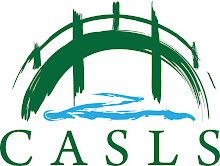Last week we shared several teachers’ ideas for teaching and practicing numbers. Here are some more:
---
An oral activity my students like is guessing a number. I select a number and give them the range (0 to 20, 0 to 60, 0 to 100 or whatever you decide). I call on a student to guess a number and I say "plus" or "moins" (mas, menos or any other language). For example if the range is 0 to 20 and I selected 14, if the first student says "8", I reply "plus.” It's higher than 8. The next student should select a number between 8 and 20 and so on. Whoever guesses the number comes to the front of the class. I have the student write the number he chose on a piece of paper so I can make sure no mistake is being made. It's a great activity to do at the end of class when there are a couple minutes left. At the beginning, the numbers can be written on a piece of paper so students can cross them out instead of keeping track of them in their head.
Re: [FLTEACH] Teaching numbers. FLTEACH listserv (FLTEACH@LISTSERV.BUFFALO.EDU, 26 Oct 2011).
---
In groups of 2, I use dice. The students take turns rolling one die and saying the number. Then they add both dice to say the number. Then they make a double digit with the two dice. They enjoy this, but are forewarned that if the rolling gets crazy, we will move onto something else.
Stegeman, D. Re: [FLTEACH] Teaching numbers. FLTEACH listserv (FLTEACH@LISTSERV.BUFFALO.EDU, 26 Oct 2011).
---
Make them say and write down their phone numbers.
Make them stand up and say the numbers from 1 to 100. Each student says a number (in a row). Whenever a number can be divided by 7 or the number includes a 7 (17, 37 etc.) the student has to say "BEEP". If one does not pay attention he has to sit down and so on. It’s funny when you come to 70...
Let them speak one after another. Each student adds e.g. 3 to the number mentioned before: 1,4,7,10,13 etc.
Make a tandem worksheet: One student has the number on his side, the other has the word and so they check themselves:
A: 11 B: once
A: cincuenta y siete B: 57 etc.
Bohrer, D. Re: [FLTEACH] Teaching numbers. FLTEACH listserv (FLTEACH@LISTSERV.BUFFALO.EDU, 25 Oct 2011).
---
I use playing cards and divide the students into fours. They turn over the cards (10 each) and add their values (face cards are 10s, I also teach them subtraction (The next student takes the sum and subtracts each card until they get to zero). I have them take the sum and divide it by the number of cards. I also have them multiply 4 cards. This helps them with math as well as German.
I also make PowerPoint's with the NFL/NBA/NHL players from our local team (and other superstars). We go up and down the row and say the number of the player's jerseys.
Sometimes I play Yahtzee however they need to speak only German using words/phrases they learned.
Snyder, John. Re: [FLTEACH] Teaching numbers. FLTEACH listserv (FLTEACH@LISTSERV.BUFFALO.EDU, 26 Oct 2011).
---
Doing a version of Bingo with French letters and numbers is a great way to get students to memorize their numbers, especially if there are small prizes involved. You can set it up 0 - 100, and they can maybe have a cheat sheet with all the numbers and French words for them on it for the first few times but then have to do it without the cheat sheet. Remember to make the students call out their numbers in French if they think they have won! You could even have the students calling out the numbers if you want to make it more involved.
Re: [FLTEACH] Teaching Numbers en francais. FLTEACH listserv (FLTEACH@LISTSERV.BUFFALO.EDU, 1 Nov 2011).
---
One activity that takes no set up is to put students in pairs, threes, or fours with a deck of cards (take out the face cards.) One person lays down the card, go around the circle saying the value. Pass the deck to the next person, now put down two cards. If there is a 2 and a 5; it's 25. I even do this with 3 or 4 cards or more for the advanced levels. See how far they can get! It's simple, but it works! 10 minutes maybe.
Another activity that takes a little set up is to make A/B sheets of math problems. Top row is addition, next subtraction, multiplication and division - 4 rows. The student READS the problem to the partner (without showing them the paper), the listener writes it down (scratch paper or you can collect), makes the calculation, and shows the written answer to the speaker and says it in the target language (no English!)
WARNING: I had to put the correct answer on for the reader as some are quite math challenged .
Example: one reads an addition problem, the other writes, figures the answer and shows while saying answer aloud, then swap. 3-4 problems of each type is plenty. It'll take 20 minutes for them to read them all and figure them. It gets interesting when they come up with the wrong answer. Did the partner say the wrong thing, did they hear the wrong thing or did they mess up on the math?
Rensi, Dana. Re: [FLTEACH] FLTEACH Digest - 25 Oct 2011 to 26 Oct 2011 (#2011-300). FLTEACH listserv (FLTEACH@LISTSERV.BUFFALO.EDU, 27 Oct 2011).
November 20, 2011
Subscribe to:
Post Comments (Atom)





No comments:
Post a Comment
Note: Only a member of this blog may post a comment.